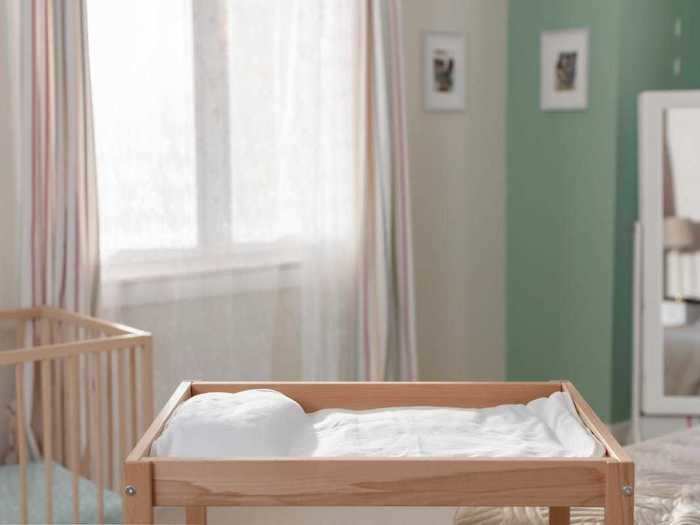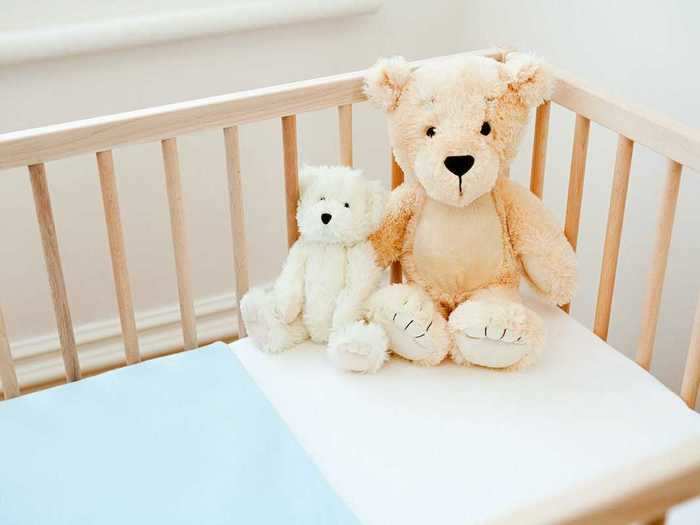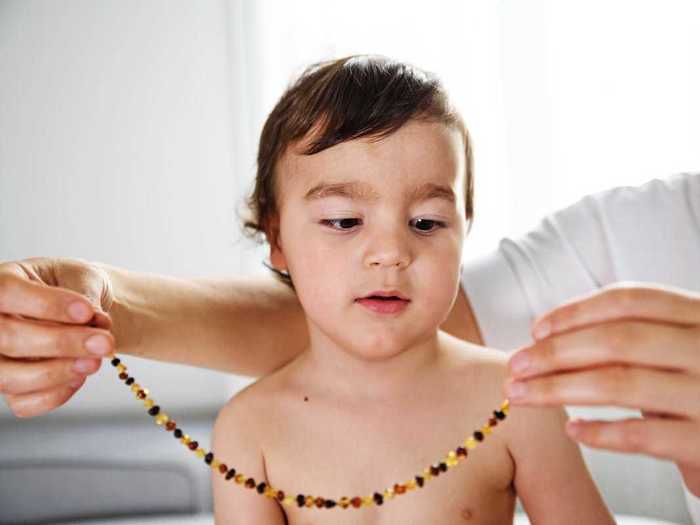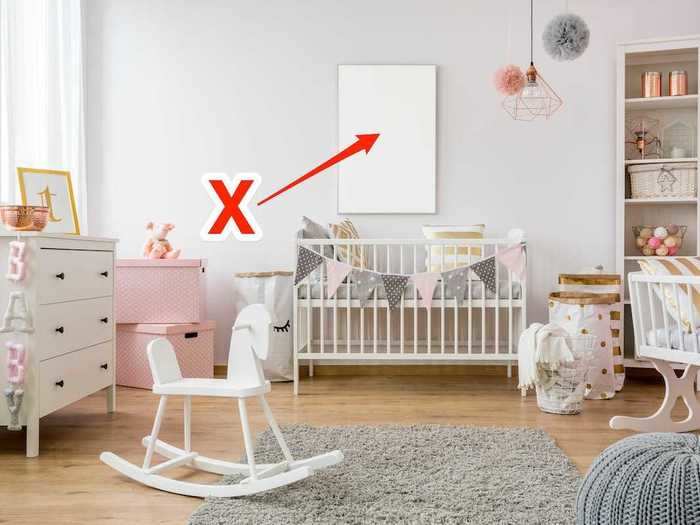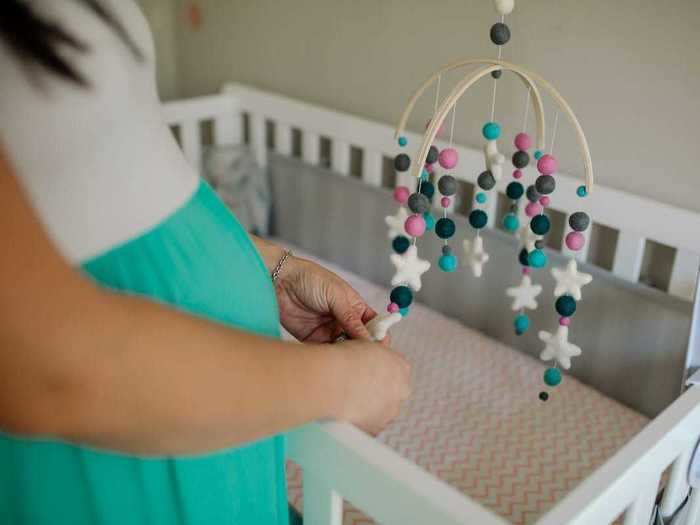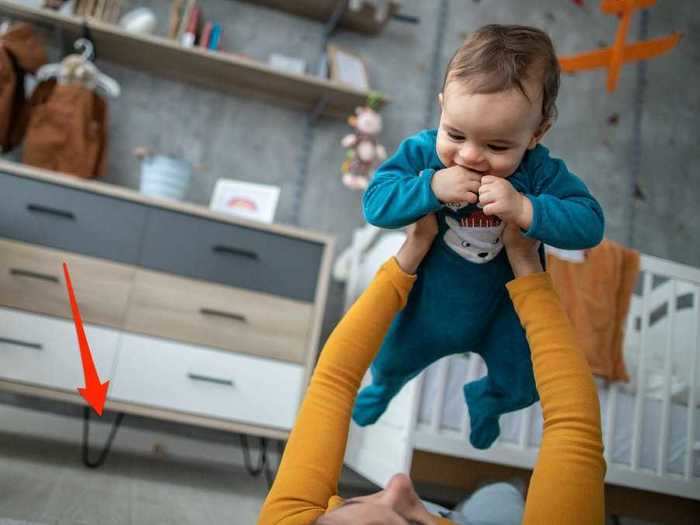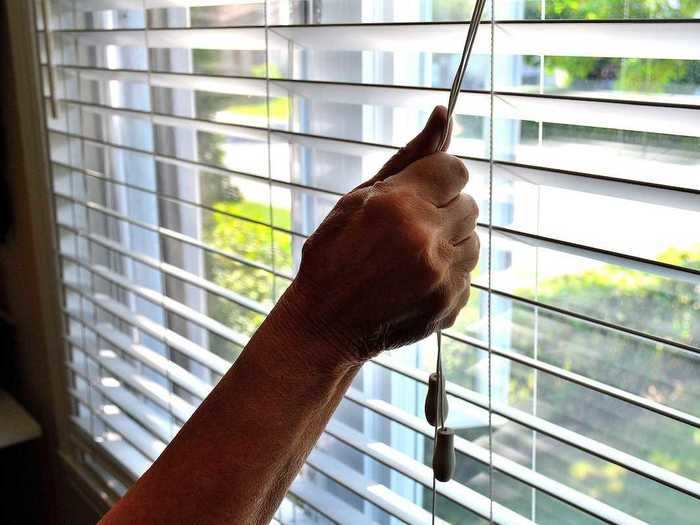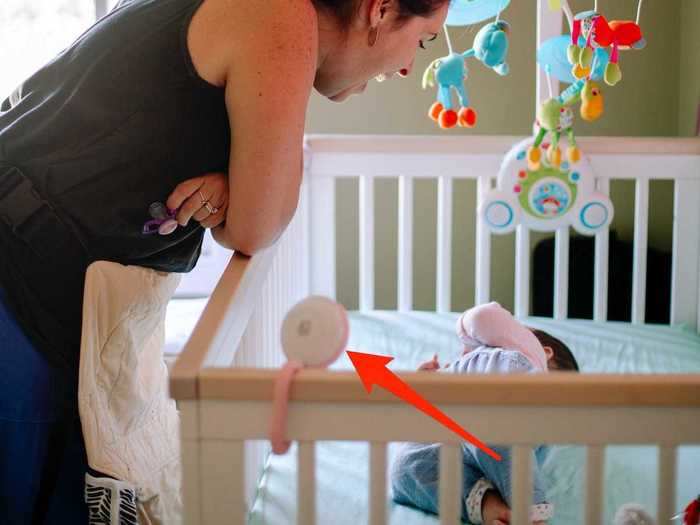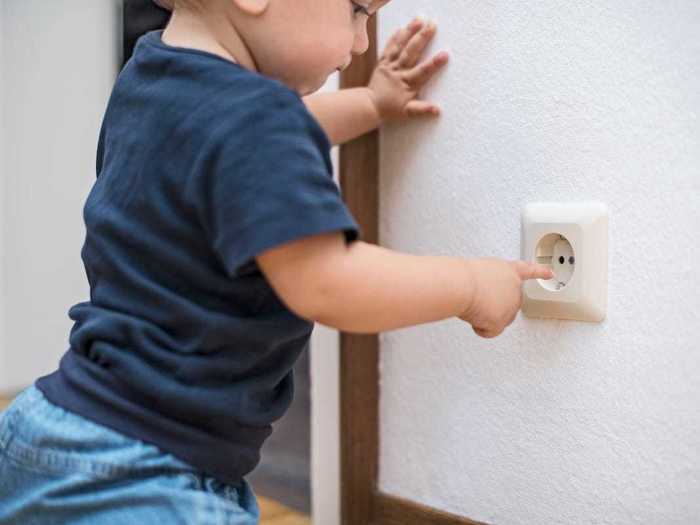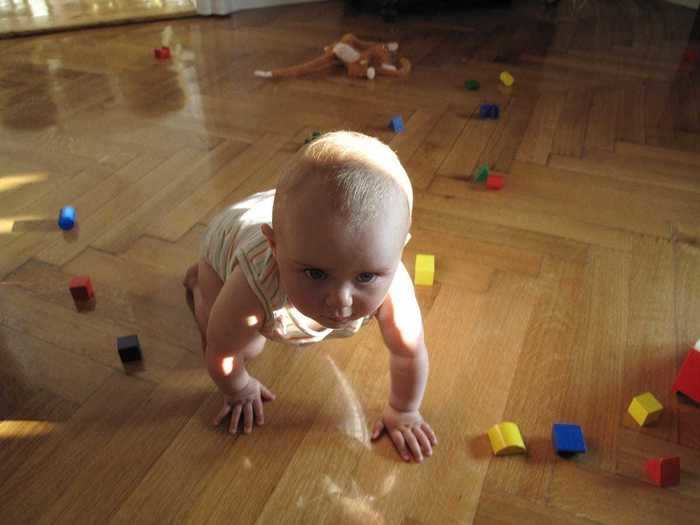Arrows point to items pediatricians avoided in their infant's nursery.KatarzynaBialasiewicz/Getty Images - Insider spoke to five pediatricians about things they would avoid having in their nursery.
- At the top of the list were stuffed animals and blankets in the crib.
- Others mentioned how they skipped the decorative mobile and even a changing table when babyproofing.
Some of the cutest things inside a nursery - stuffed animals, artwork, colorful mobiles - may pose dangers families might not initially consider.
Insider spoke with five pediatricians about how they'd design a nursery and babyproof the room.
Dr. Syeda Amna Husain, a pediatrician, lactation consultant, and mother, said parents should take babyproofing step-by-step.
"Try not to overwhelm yourself, but start thinking about what your child could get into," she told Insider.
Other pediatricians, like Dr. Krupa Playforth, a pediatrician based in Virginia and mother of two, suggested getting down to your child's eye level - even if that means crawling on your hands and knees.
When it comes to babyproofing, here are 10 things pediatricians avoided having in their children's nurseries.
One pediatrician skipped the changing table.
A changing table in a nursery.
Dreamer Company/Getty Images
"Childproofing is going to come in stages. When your child is just a few days old, there is very little that he or she is going to do that can hurt themselves on their own," Husain said.
But one thing that does have potential danger is heights. "I never recommend leaving a child unattended where they could fall or roll from a height."
A common infant fall is one from the changing table. In 2012, the Consumer Product Safety Commission estimated that 5,100 children younger than 5 were injured in changing table accidents.
Dr. Nkeiruka Orajiaka, an ER pediatrician and a mother of three, said she often sees these incidents in the ER. Potential falls are the reason is why Orajiaka ditched a changing table. Instead, she changed her three children from for the floor, she said.
Orajiaka said she realizes that not everyone wants to change their child on the floor. If you do opt for a changing table, make sure everything you need is within arms reach and you never take your eyes of the baby.
Absolutely no crib bumpers, stuffed animals, or blankets in the crib, pediatricians said.
Two teddy bears inside a crib.
Image Source/Getty Images
Every pediatrician Insider spoke with stressed the importance of a baby sleeping in an empty crib.
"Safe sleep is just absolutely the most important thing, and it could be the most life-changing thing," Dr. Meghan Martin, a pediatric emergency medicine physician at Johns Hopkins All Children's Hospital and a mom of four, told Insider.
A mattress and a fitted sheet are all you need, said Dr. Denise Nuñez, a pediatrician in a critical care unit in Bronx, New York, and a mother of two.
The American Pediatrics Association agrees and states that items like stuffed animals, blankets, crib bumpers, and pillows, should not be placed in the crib. A 2007 study in the Journal of Pediatrics concluded that crib bumpers are unsafe.
To help a parent remember, Orajiaka suggested remembering the ABC rule: An infant should always sleep "alone, on their back, and in an empty crib."
Anything else poses a suffocation or strangulation risk. Martin said none of these items should be inside a crib until the baby is at least 1 year old, and Nuñez suggested waiting to incorporate stuffed animals into playtime until the child can sit up straight, lift their head, and turn around.
Amber teething beads might be trendy, but they can also be dangerous.
A mother puts amber teething beads on a baby.
FGorgun/Getty Images
There's been a trend for parents to use amber beads as a teething tool for their child.
But Husain didn't use them with her daughter and discourages others from using them, too.
"I really don't understand the trend here with amber beaded necklaces and using them for teething. They're a huge choking risk and a strangulation risk," Husain said.
Both the American Academy of Pediatrics and FDA agree with Husain.
Plus, a 2019 study in the medical journal BMC Complementary Medicine and Therapies reported that the beads aren't anti-inflammatory, which is one of the perceived benefits of amber beads.
Some pediatricians advised avoiding all heavy artwork and mirrors.
An arrow points to artwork above the baby's crib.
KatarzynaBialasiewicz/Getty Images
"Nursery decorations, we go from zero to one hundred," Orajiaka told Insider. "We're trying to make it all pretty." But often those decorations have the potential to be dangerous.
Heavy artwork and heavy mirrors could easily be bumped, knocked, or pulled off the wall. If the artwork is hanging over a crib, it might fall into the crib and cause harm to a baby, especially if it's encased in glass or has sharp edges.
So if you must have artwork, both Husain and Orajiaka encouraged hanging the lightweight decor on the opposite wall of the crib, where it's less likely to fall and land on the baby.
Another pediatrician skipped the decorative mobiles.
A baby mobile made of small beads.
Cavan Images/Getty Images
"We never did mobiles with any of our kids," Playforth told Insider.
The cute nursery decor can quickly turn into an entanglement hazard if pulled down, according to the American Academy of Pediatrics.
If you do decide to have one, look for one that doesn't have small detachable parts and won't be a choking or strangulation hazard. The Rady Children's Hospital in San Diego urges parents to make sure mobiles have strings shorter than seven inches.
When you hang it up, secure it well and place it high.
"You just want to be careful that once your child is able to stand, that they don't pull those down onto themselves," Playforth said.
No pediatricians had any unanchored, unbracketed, or unstable furniture in their nurseries.
An arrow points to the legs of a dresser.
miodrag ignjatovic/Getty Images
Every pediatrician Insider spoke to made sure heavy furniture was secured to the wall.
"In any room, we have to be concerned about the furniture," Martin said. "Furniture really should be secured to the wall using a bracket, wall strap, anchor — something that's pretty strong. So if the kid does try and climb on it, it's not going to tip over on them."
The US Consumer Product Safety Commission reported nearly 475 children died of tip-over incidents between 2000 and 2019 — a majority involving children under 6.
Simple, affordable brackets or furniture straps can make a huge difference.
None of the pediatricians' blinds or curtains had long, looped, or exposed strings.
A person closes window blinds.
ziggy1/Getty Images
If your home is older, be on the lookout for blinds with long, looped strings, the pediatricians warned.
These dangling strings pose a strangulation risk. Between 1990 and 2015, about two kids a day, or 17,000 children, went to the emergency room for injuries related to corded blinds, according to a study published in the journal Pediatrics.
If your home has these cords, cut the loop and purchase a cord winder or wrapper.
Fortunately, in 2018, a new safety standard was set and blind manufacturers were required to produce window coverings that are either cordless or have inaccessible cords, according to USA Today.
One pediatrician said she had to move a wired baby monitor.
An arrow points to a wireless baby monitor.
Cavan Images/Getty Images
Playforth said her 3-year-old son has a knack for exploring everything — including the baby monitor.
"We had positioned it pretty high up, but above the crib," she said. "And at some point when he was in the room, he managed to grab the cord and pull it down."
Fortunately, her son was OK, and she quickly moved the baby monitor to a new spot that was out of reach.
That scenario is why Orajiaka encouraged parents to opt for a wireless monitor if they can.
Similar to blinds, a baby monitor's cord has the same strangulation risk, Orajiaka said. If your baby monitor does have a cord, make sure it's out of the child's reach and try using cable covers attached to the wall.
These suggestions also apply to any item that has a cord in the nursery, like a lamp.
Pediatricians also removed access to any outlets.
A baby near an exposed electrical outlet.
Bernhard Lang/Getty Images
Every pediatrician mentioned using outlet covers because a curious baby and an exposed outlet is a recipe for disaster.
When purchasing outlet covers, make sure to find ones that aren't easily removable and don't have small pieces, which could be a choking hazard.
Orajiaka also suggested placing heavy furniture in front of the outlet so her children can't reach it.
"Using furniture to cover it completely means they don't even have access to it," she said.
Avoid toys and items that could be potential choking hazards.
A baby crawling on a floor covered in toys.
Frank Rothe/Getty Images
According to Healthy Children, children between the ages of 6 months and 3 years are at the highest risk for choking on food and non-food items.
Every pediatrician said that toys with small pieces are a potential choking risk.
"We did try to always make sure that the toys we brought into our home are not a choking hazard," Husain said.
To decide if a toy is a choking hazard, Husain and Orajiaka suggested the toilet tube test. If a toy can fit through the toilet paper tube, which is about 1.25 inches across, it's a choking hazard.
From there, you can separate toys into which ones you don't want in your home, which ones a child can play with supervised, and which ones are allowed for unsupervised play.
In addition to these recommendations, the pediatricians Insider spoke to also suggested saving poison control's phone number, taking a CPR class, and reading up on first aid tips.
With all these tips in mind, the pediatricians reminded families to cherish their time with their babies.

